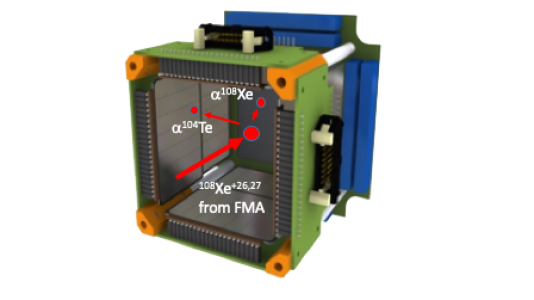In a study published in the American Physical Society, the superallowed α decay chain 108Xe-104Te-100Sn into the self-conjugate doubly magic 100Sn nucleus was observed.

Figure 1
Scientific Achievement
The superallowed α decay chain 108Xe-104Te-100Sn into the self-conjugate doubly magic 100Sn nucleus was observed.
Significance and Impact
This observation will help to improve models of α decay and will shed light on the clustering phenomenon in nuclei.
Research Details
- α decay of 104Te is only the second instance, besides 212Po, of a emission into a doubly magic nucleus
- 108Xe, 104Te are first self-conjugate (the same number of protons and neutrons) α emitters ever observed
- α particle preformation factor in 108Xe or 104Te is at least factor of 5 larger than for 212Po indicating superallowed α decay
- enhanced α particle formation could be the result of strong proton-neutron interaction in N=Z nuclei
DOI: https://doi.org/10.1103/PhysRevLett.121.182501
Work was done using the Fragment Mass Analyzer at the Argonne Physics Division ATLAS facility.
Figure 1: Implantation of 108Xe+26,27 ions, selected by the Fragment Mass Analyzer, into a double-sided Si strip detector (DSSD), followed by the detection of 108Xe-104Te α particles in rapid succession in the DSSD and the surrounding BOX detector.